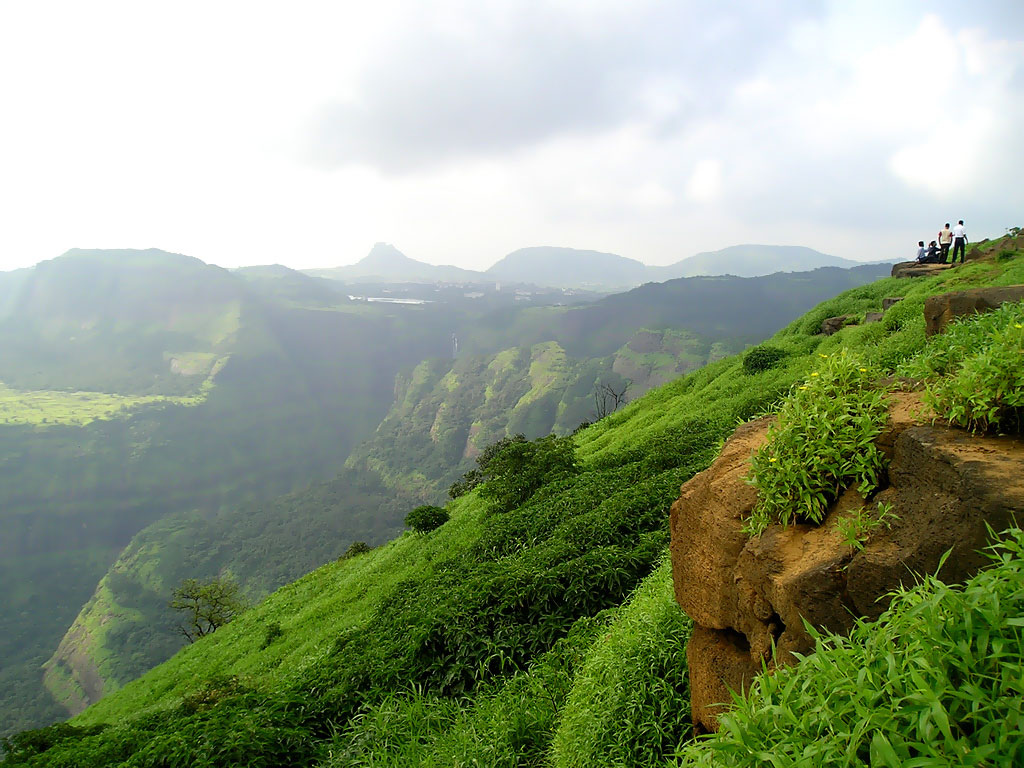Weekend History Lessons at Lonavala
Often branded only as a quick weekend escape, the hills of Lonavala are capped with stories waiting to be told.

This photo, “Lonavala_Tours” @Flickr from
Arjun Singh Kulkarni made available under a Share Alike, Attribution license.
First, some facts universally known. Lonavala, “The Jewel of the Sahyadri Mountains”, is famous in touristy circuits for its mist-covered hills, beautiful valleys, huge lakes, thundering waterfalls and panoramic views. Located at an altitude of 625 metres above sea level, Lonavala and its twin Khandala are a popular weekend getaway for many who hail from Mumbai and Pune, due to the extremely refreshing weather which prevails for most of the year.
However, besides the obvious ‘picturesque’ appeal of the place, Lonavala is also steeped in history. Ruled by the Yadav Kings in its early days, Lonavala was conquered by the Mughals who ruled for a considerable period of time. The town was ‘discovered’ by the British in the early 19th century, but not before the Peshwas and the Marathas had played a significant role, constructing numerous forts and other strategic sites in the region. These historic forts are today the haunt of history enthusiasts who wish to go beyond the hill station’s well-documented natural splendour. Here’s a sampler.
The Rajmachi Fort is surrounded by a deep valley on three sides and a densely wooded forest on the other side. Due to this unique location, the Rajmachi Fort can only be reached on foot, a trek that most tourists love thanks to the breathtaking vistas it offers.
The Lohagad Fort, which means ‘Iron Fort’ in Marathi, is an impressive structure and the best fort that the region has to offer. Belonging to the period of Shivaji’s reign, Lohagad was used by the Emperor in the 16th century to house his treasures and keep prisoners. Located at a height of more than 1000 metres, the fort’s panoramic vantage points and imposing doors and balconies bear eloquent testimony to how Shivaji defended his kingdom and safeguarded his freedom from the Moghuls.
The Visapur Fort is higher and larger than Lohagad, and historically, both forts are connected. Its higher position was leveraged by British troops who set up base at Visapur and opened fire on Lohagad, forcing the Marathas to take refuge elsewhere, an event which actually gave the British control of Lohagad. Visapur Fort is also famous for beautifully complex designs on its protective walls, designs which haven’t eroded away even after centuries.
The Tunga Fort was primarily built to keep a watch over the other surrounding forts in the area. From a distance, the conical peak of the fort looks like a long rock jutting into the sky, which also acts as a good watchtower. Tunga Fort is circled by the Pavana Dam and can only be approached by motorboat from there. Climbing the fort is sometimes a daunting task for tourists as the steep, narrow and slippery pathways make it a difficult trek. For those who do make it right to the top, the view is worth it.
Besides these famous forts, Lonavala is also known for caves which show the existence of a Buddhist civilization about two thousand years ago. This rich display of culture is concentrated at the sites of Karla, Bhaja and Bedsa, where Buddhist monks built monasteries in exquisitely carved caves. In each cave, it is easy to make out the central prayer hall accompanied by dozens of dwellings for monks. The walls are adorned with images of Buddha and Buddhist ideologies through inscriptions.
The Buddhist caves at Karla are some of the finest examples of ancient rock-cut caves of India. The roof is high and semicircular and its most remarkable feature is that it is supported by wooden beams which have survived to this day!
The Bhaja Caves are much smaller than the Karla caves but are designed in the same unique style. These caves are characterised by the rays of the setting sun, which illuminate each and every element of the caves and a serene waterfall at the very end.
The Bedsa Caves are as large as the Karla Caves and have some of the most beautifully executed stonework in the region. The caves face east and the best time to visit is in the morning when the rays of the sun make every intricate detail more visible.
The caves of Karla, Bhaja and Bedsa are actually on a major trade route of the past, leading from the Arabian Sea into the Deccan Plateau. With a little bit of imagination, it is easy to picture that these caves would also have provided lodging for weary traders, given the legendary hospitality of the Buddhist monks.
The next time you visit Lonavala for a ‘getaway’, take a few moments to remember the amazing history of the region. Visit these archaeological wonders and find a new reason to look forward to weekends in the hills.

